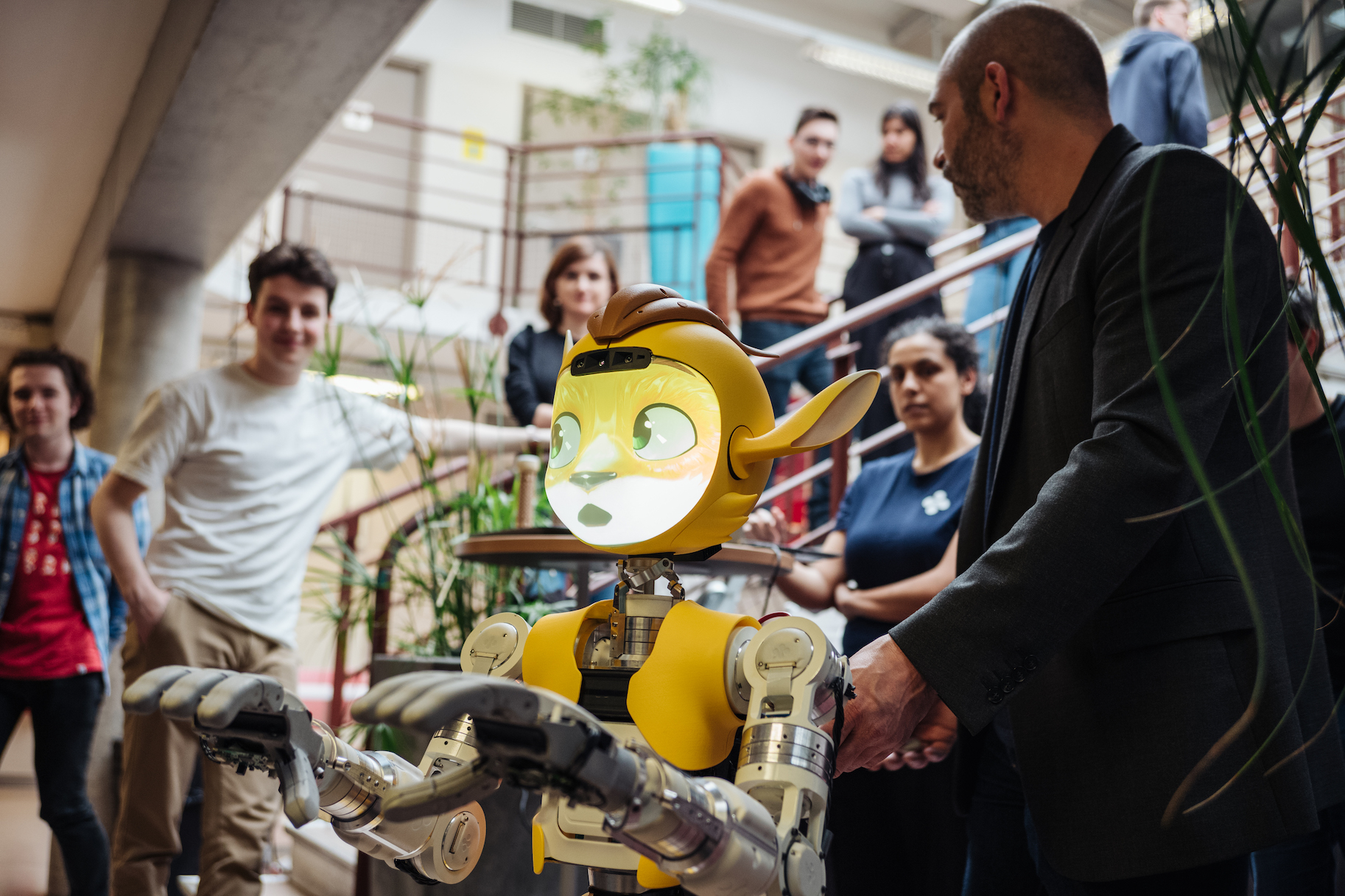PEPR O2R: towards a new generation of robots that are closer to humans
Date:
Changed on 18/07/2024

The current design of robots, strongly linked to industrial use, leads to difficulties and even failures in interactions with humans. This observation has prompted the creation of the O2R Priority Research Programme and Equipment (PEPR), co-sponsored by Inria, CNRS and CEA. The aim of this PEPR is to carry out an in-depth review of the hardware design and software implementation of robots, incorporating from the outset a reflection on the conditions for robotics adapted to interaction with users.
"The questions behind this PEPR are: what doesn't work and why? Social interaction with robots is not natural. This is mainly due to the fact that technology has been pushed very hard in recent years, which is a good thing on the one hand, but which on the other has been accompanied by a lack of reflection on the use and framework in which robots are integrated", explains Christian Duriez, head of the DEFROST project team at the Inria centre at the University of Lille and co-leader of the O2R programme.
The aim of the eight-year O2R programme is to give impetus to a new community of players in robotics and the social sciences, with a view to deconstructing the image of robots, i.e. the image we have of them, so as to develop a new generation of robots to serve human beings and stimulate, from a forward-looking perspective, a more global reflection on the relationship between robotics and society.
"At the heart of this reflection are a number of technical questions: how can we advance research in the field, through structuring actions around the design of robots, the definition of movements, the integration of AI, interaction with the environment and the modelling and simulation aspect? But instead of studying them by focusing solely on robotics research, we want to include players from the SHS (human and social sciences)", says Christian Duriez, before adding "We are also going to work with artists, for example by proposing artists' residencies in the laboratories, the idea being to move towards a dialogue with society".
The programme, which has just begun a first phase of funding over five years for projects that are already structured, will launch its second and third phases in two and four years respectively. The aim is to give ourselves time to take stock of the first phase, and to give ourselves the opportunity to develop the projects or launch new ones based on emerging themes. "We don't want to set everything in stone straight away. One of the strengths of the French robotics community is its ability to work together. In building the PEPR, we had to make choices, but the door remains open, especially for young researchers. Collectively, we need to make the most of this opportunity, by thinking about robotics differently", explains Christian Duriez.
The programme will focus in particular on assistance for people with disabilities, or work assistance as the first use cases, with in particular the problem of reducing the distance between the robot and the human in the case of a prosthesis or an exoskeleton. There are also more fundamental issues, such as the ability to model and equate the mathematical aspects of robotics. Looking to the long term, the programme aims to integrate environmental issues and resource limitations to analyse the evolution of the sector through the trends that surround it, such as artificial intelligence or the emergence of flexible robots, but above all to influence its future. And Christian Duriez to conclude:
The overall objective is to demonstrate results through concrete applications. While the structuring actions are designed to do in-depth work on the sector, we also have integrated projects with more concrete use cases. What kind of robotics will emerge in ten years' time? It's up to us to get involved in building it.